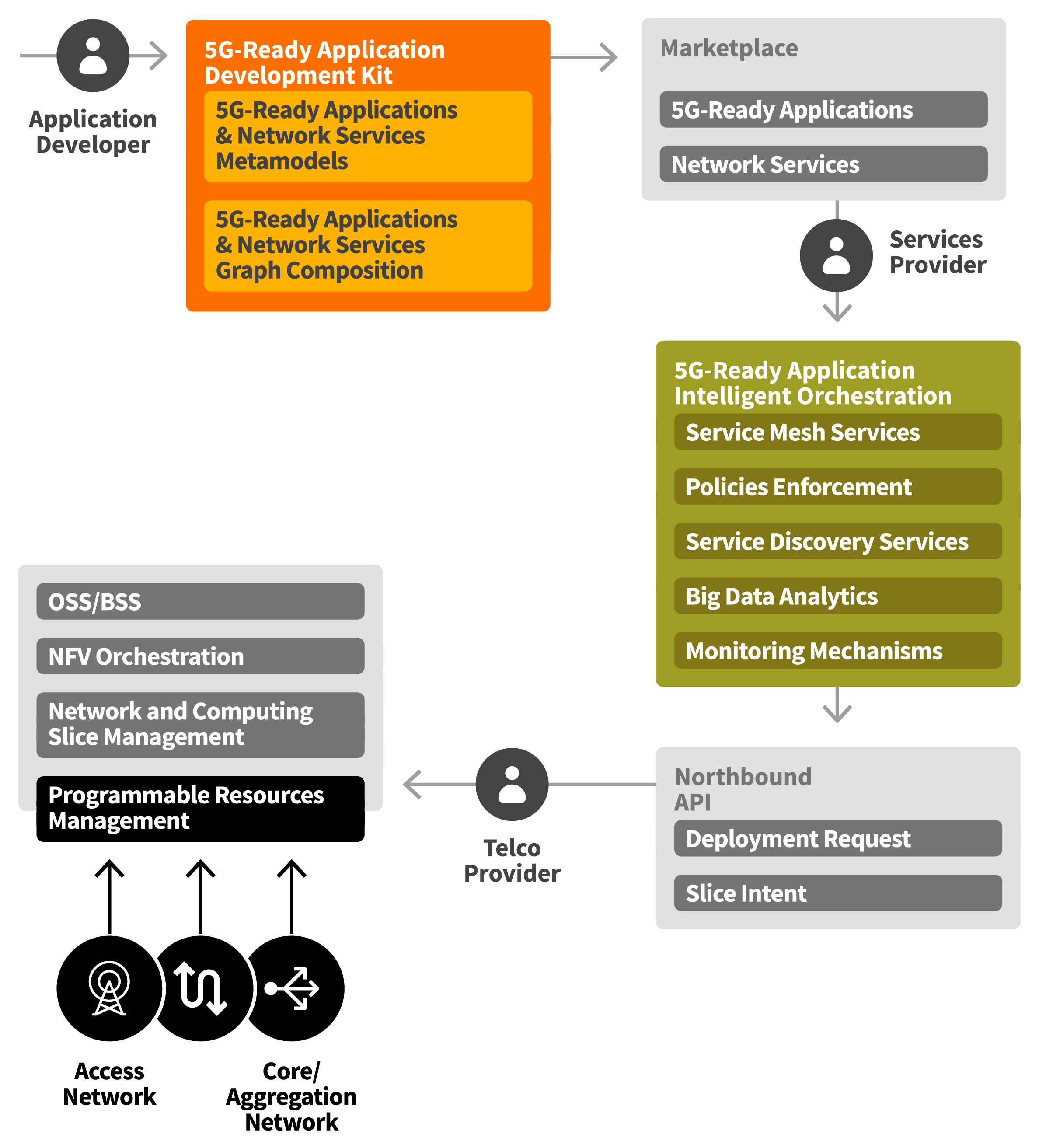MAESTRO: SDN/NFV Technologies and Cloud Applications Orchestration
The evolution and adoption of Software-Defined Networking (SDN) and Network Function Virtualization (NFV) technologies are totally transforming the way that services and applications are deployed and orchestrated over programmable infrastructure (compute, storage and network). Actually, “softwarization” of the Internet is taking place aiming to optimize costs and processes and lead to new ways of infrastructure management as well as new application development and deployment models. In particular, SDN, NFV and network programmability are creating the conditions to reinvent network and service architectures.
Such an evolution is inline with the emerging specification of 5G technologies along with the various efforts realized for bringing vertical industries closer to telecom operators for optimally serving their needs. The term “network slice” is introduced for representing the end-to-end network and compute infrastructure that has to be provided by telecom operators per vertical industry, for supporting optimal placement and orchestration of vertical applications considering their network requirements. In such a case, vertical applications orchestration is realized by cloud-oriented orchestrators, while network mechanisms provision is realized by mechanisms provided through an OSS/BSS (Operational Support System/Business Support System) in close collaboration with a NFV Orchestrator (NFVO), namely OSM.
Following this trend, UBITECH is leading the implementation of MAESTRO, aligned with the MATILDA Framework (http://matilda-5g.eu/), that regards an end-to-end orchestration framework for cloud-native applications over 5G infrastructure. MAESTRO follows a top-down approach where applications design and development leads to the instantiation of application aware-network slices, over which vertical industries applications can be optimally served. Different stakeholders are engaged in this process, however with clear separation of concerns among them.
The MAESTRO reference architecture is divided in three distinct layers, namely the Applications Development Layer, the Applications’ Orchestration Layer and the Network and Computing Slice Management Layer. The Applications Development Layer is oriented to software developers, the Application Orchestration Layer is oriented to application/service providers and the 5G Infrastructure Slicing and Management Layer is oriented to communication service/infrastructure providers.
The Applications Development Layer takes into account the design and development of cloud-native applications per industry vertical, along with the specification of the associated networking requirements. The associated networking requirements per vertical industry are tightly bound together with their respective applications’ graph, which defines the business functions, as well as the service qualities of the individual application.
The Applications’ Orchestration Layer supports the dynamic on-the-fly deployment and adaptation of the cloud-native applications to its service requirements, by using a set of optimisation schemes and intelligent algorithms to provide the needed resources across the available multi-site programmable infrastructure. This layer is responsible for initiating a deployment request towards the Programmable 5G Infrastructure Slicing and Management Layer for the creation of an application-aware network slice, as well as the overall orchestration of the cloud-native application. It should be noted that the request is based on the specification and implementation of open APIs for the interaction among the Cloud orchestration mechanisms and the OSS, following the evolving 3GPP specifications (e.g. based on the results of the 3GPP Common API Framework Study).
The Programmable 5G Infrastructure Slicing and Management Layer is responsible for setting up and managing the cloud-native application deployment and operation over an application-aware network slice. Network slice instantiation and management, network services and mechanisms activation and orchestration as well as monitoring streams management are realized through the design and development of a novel OSS/BSS. Such actions are triggered based on requests provided by the Applications’ Orchestration Layer through the specification of Open APIs. The OSS/BSS is able to decompose the provided requests into the activation of the required network services, part of which is provided through the NFV Orchestration mechanisms. The Open Source MANO (OSM) solution is adopted for this purpose.



